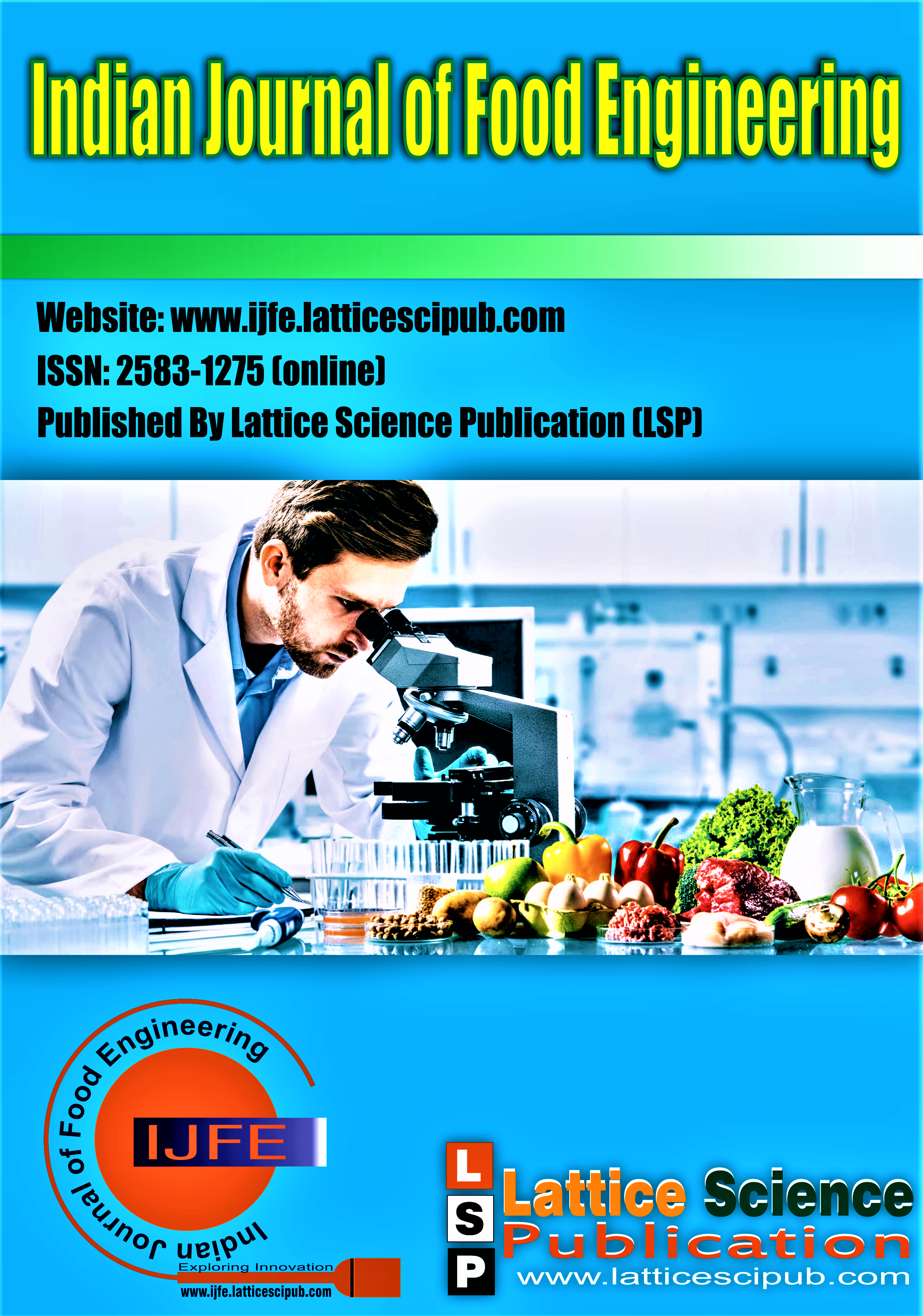Food Extrusion: A Highly Popular Technology to Process
Main Article Content
Abstract
The thermomechanical process of extrusion is described in the abstract. In the production of ready-to-eat pasta, cereals, snacks, pet meals, and textured vegetable protein (TVP), it has emerged as a crucial method of food processing. A snugly fitting screw revolving inside of a still barrel makes up an extruder. Ingredients that have already been pre ground and condition enter the screw where they are delivered, combined, and heated using various methods. The product exits the extruder through a die, where it typically puffs and transforms texture as a result of normal forces and the discharge of steam. Mathematical models for extruder flow and torque have been proven effective in understanding extrusion processes. These models have helped to determine the behaviour of raw material during extrusion. There are several food extruder designs available. The extruder is a high temperature, quick technique that minimises vitamin and amino acid losses in many of these applications. The extrusion process also affects the product’s form, flavour, and colour. Extrusion is frequently used in the manufacture of wholesome meals. The increase of protein quality and digestibility, as well as the use of extrusion to denature antinutritional components, are highlighted.
Downloads
Article Details

This work is licensed under a Creative Commons Attribution-NonCommercial-NoDerivatives 4.0 International License.
How to Cite
References
Patil, R. T., Berrios, J. D. J., Tang, J., Pan, J., & Swanson, B. (2005). Physical characteristics of food extrudates-a review. In 2005 ASAE Annual Meeting (p. 1). American Society of Agricultural and Biological Engineers.
Ainsworth P, Ibanoglu S, Plunkett A, Ozer EA. Physical and sensory evaluation of a nutritionally balanced gluten free extruded snack. Journal Food Engineering. 2006; 75(4):469-472 [CrossRef] 3. Santos, D., Pintado, M., & da Silva, J. A. L. (2022). Potential nutritional and functional improvement of extruded breakfast cereals based on incorporation of fruit and vegetable by-products-A review. Trends in Food Science & Technology [CrossRef]
Bhandari B., D‘Arcy B. and Young G. (2001). Flavor retention during high temperature short time extrusion cooking process: a review. International Journal of Food Science and Technology, 36:453-461. [CrossRef]
Yadav, K. C., & Chandra, R. (2015a). Development of extrudate enriched with green leafy vegetable powder and its effect on nutritional characteristics. Bioved, 26, 231236. 6. Bashir, K., Aeri, V., & Masoodi, L. (2012). Physio-chemical and sensory characteristics of pasta fortified with chickpea flour and defatted soy flour. Journal of Environmental Science, Toxicology and food technology, 1(5), 34-39 [CrossRef]
Rao, B. D., Suneetha, A., Kiranmai, E., Srenuja, D., & Tonapi, V. A. (2018). Development of multi millet based extruded snack food. Int J Chem Stud, 6(4), 17481752 8. Yadav, K. C., & Saini, R. (2018). Development and quality evaluation of foxtail millet (Setaria italica) based extruded product using twin screw extruder. Journal of Pharmacognosy and Phytochemistry, 7(4), 658-663
Saini, R., & Yadav, K. C. (2018). Development and quality evaluation of little millet (Panicum sumatrense) based extruded product. Journal of Pharmacognosy and Phytochemistry, 7(3), 3457-3463.
Yadav KC, & Chandra R. (2015b) Influence of green leafy vegetable incorporation and process variable on textural characteristics of extrudate. Bioved. 2012; 26:95-105
Imtiyaz, H., & Yadav, K. C. (2013). Sensory and Textural evaluation of Value Added Extruded Sev (Crisp Snack). The Allahabad Farmer, 68(2).
Liu, S., Alavi, S., & Abughoush, M. (2011). Extruded moringa leaf–oat flour snacks: physical, nutritional, and sensory properties. International Journal of Food Properties, 14(4), 854-869. [CrossRef]
Nkesiga, J., & Okafor, G. I. (2015). Effect of incorporation of amaranth leaf flour on the chemical, functional and sensory properties of yellow maize/soybean based extrudates. J. Environ. Sci. Toxicol. Food Technol, 9, 31-40.
Liu, G., Ying, D., Guo, B., Cheng, L. J., May, B., Bird, T., ... & Augustin, M. (2019). Extrusion of apple pomace increases antioxidant activity upon in vitro digestion. Food & function, 10(2), 951-963. [CrossRef]
Panditrao, M. P., & Yadav, K. C. (2022). Development and quality evaluation of pasta incorporated with beetroot powder. Pharma Innovation 2022;11(2):16761681.
Altan, A., McCarthy, K. L., & Maskan, M. (2008a). Evaluation of snack foods from barley–tomato pomace blends by extrusion processing. Journal of Food Engineering, 84(2), 231-242 [CrossRef]
Altan, A., McCarthy, K. L., & Maskan, M. (2008b). Twin-screw extrusion of barley–grape pomace blends: Extrudate characteristics and determination of optimum processing conditions. Journal of Food Engineering, 89(1), 24-32 [CrossRef]
Dayakar RB, Bhargavi G, Kalpana K, Vishala AD, Ganapathy KN, Patil JV (2015) Development and standardization of sorghum pasta using extrusion technology. J Food Sci Technol 52:6828–6833 [CrossRef]





